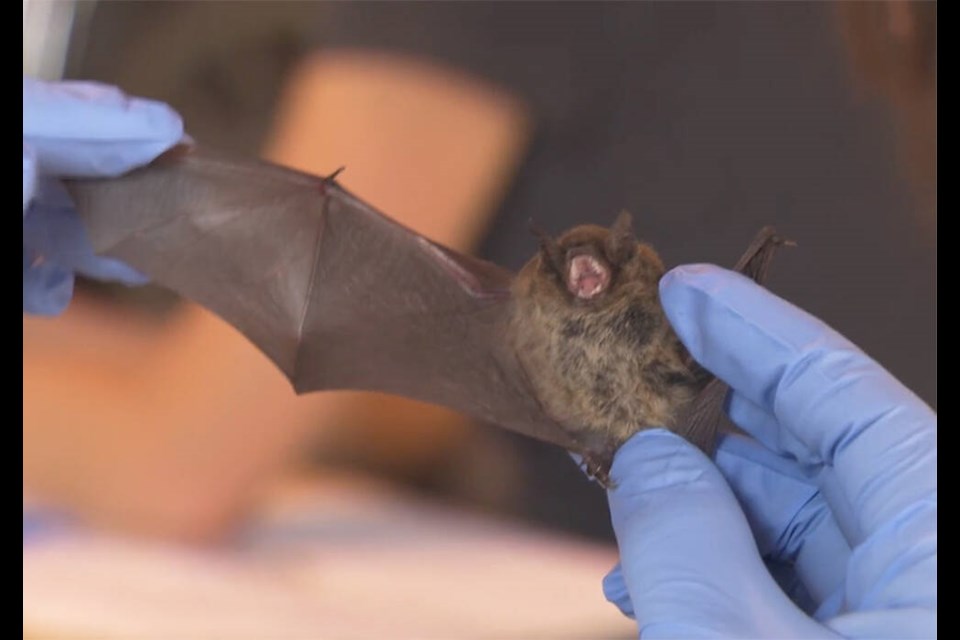The BC Community Bat Program is holding bat counts this June.
Undertaking colony reports and using volunteer assistance for the citizen-science initiative, including one earlier this week in Delta, residents are counting bats at local roost sites.
The initiative annually monitors bat populations in locations such as abandoned houses, barns, church steeples, as well as currently occupied structures, which can provide a summer home to female bats and their young.
“Monitoring these ‘maternity colonies’ can give biologists a good idea of how bat populations in an area are doing from year to year. With the occurrence of White-nose Syndrome in North America, monitoring these colonies is more important than ever,” the organization explains on its website.
The highly-infectious fungus that causes the syndrome in bats has been detected in bat guano in the Grand Forks area this year. The province has been monitoring for its arrival since the fungus first appeared on the west coast of the United States in 2016.
The province notes that the Ministry of Water, Land and Resource Stewardship is working with multiple partners to implement enhanced surveillance for the disease, as well as reduce threats to bat habitat.
The Optimist a few weeks ago weeks ago reported that Metro Vancouver is hoping measures can protect the bat colony living in an historic Delta house from White-nose Syndrome.
Located at Deas Island Regional Park, the Burvilla House, also known as the Burr Heritage House, is home to around 3,000 bats, mostly Yuma bats and little brown bats, the largest nursery colony of bats in B.C.
They rely on the habitat at the regional park and the surrounding area for food, mainly insects and thousands of mosquitoes.
Nine species have been detected in the house and the colony is monitored by Metro Vancouver and the South Coast Bat Society.
The bats have been in the house for around 20 years but monitoring increased in 2016 after it was found the colony grew significantly in the attic.
Markus Merkens, Natural Resource Management Specialist for Metro Vancouver, told the Optimist that bat colonies within regional parks have been monitored for a number of years, and this year the regional district will once again issue a permit to the BC Community Bat Program to monitor and to collect guano from known colonies within the regional parks system, including at Deas Island Regional Park.
The guano will be sent to a lab for analysis to confirm species identification and detect the presence of White-nose Syndrome related pathogens, he said, adding that monitoring for the syndrome is the first step in managing its impact.
Built in 1905, Burvilla was the first house to receive heritage designation from the city in 1982. It would be moved from its original location at the corner of River Road and 62B Street to Deas Island for restoration and preservation.




